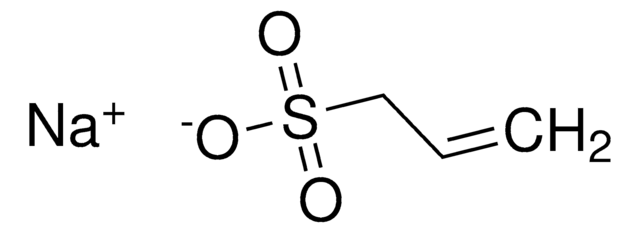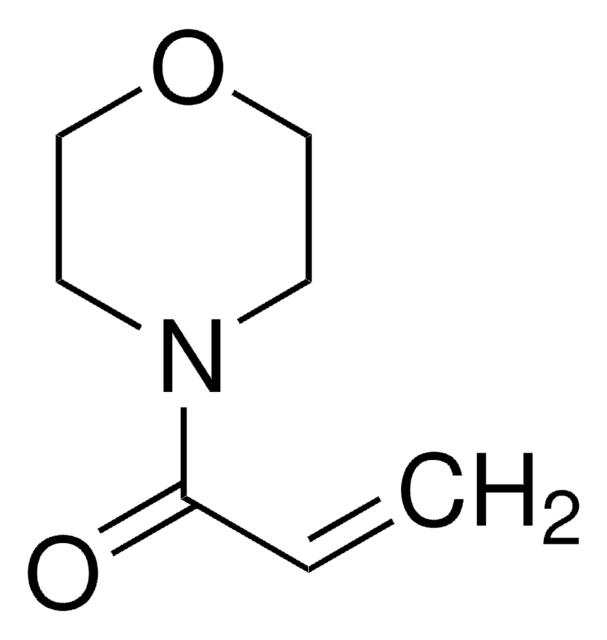655821
2-Acrylamido-2-methyl-1-propanesulfonic acid sodium salt solution
50 wt. % in H2O
Synonym(s):
2-Methyl-2-[(1-oxo-2-propenyl)amino]-1-propanesulfonic acid sodium, Sodium 2-acrylamido-2-methyl-1-propanesulfonate, Sodium acryloyldimethyltaurate
Sign Into View Organizational & Contract Pricing
All Photos(1)
About This Item
Linear Formula:
H2C=CHCONHC(CH3)2CH2SO3Na
CAS Number:
Molecular Weight:
229.23
MDL number:
UNSPSC Code:
12162002
PubChem Substance ID:
NACRES:
NA.23
Recommended Products
Quality Level
concentration
50 wt. % in H2O
refractive index
n20/D 1.4220 (lit.)
density
1.2055 g/mL at 25 °C (lit.)
SMILES string
[Na+].CC(C)(CS([O-])(=O)=O)NC(=O)C=C
InChI
1S/C7H13NO4S.Na/c1-4-6(9)8-7(2,3)5-13(10,11)12;/h4H,1,5H2,2-3H3,(H,8,9)(H,10,11,12);/q;+1/p-1
InChI key
FWFUWXVFYKCSQA-UHFFFAOYSA-M
Related Categories
General description
2-Acrylamido-2-methyl-1-propanesulfonic acid sodium salt (AMPS Na) is a monomer that belongs to the class of sulfonic acid monomers. It is commonly used in the production of various polymers, such as polyacrylamide co-polymers, poly(AMPS), AMPS-functionalized polymers, and hydrogels . These polymers are used in paints, adhesives, textiles, paper manufacturing, personal care products, coating, and adhesive applications. Additionally, AMPSNa also serves as a comonomer in combination with other acrylic monomers to enhance the scrub resistance and dispersant performance of paper coatings and paint emulsions. It can be used as a dopant and a protonating agent for conducting polymers. It is used in a variety of electronic applications.
Application
2-Acrylamido-2-methyl-1-propanesulfonic acid sodium salt (AMPS Na) can be used:
- As a monomer in the formation of polyelectrolyte copolymer gels for potential application in bioengineering, biomedicine, and water purification .
- In the fabrication of Schottky diodes, humidity sensors, and lithium-ion batteries.
- As a monomer in the synthesis of a hydrogel nanocomposite applicable as a potential adsorbent for dyes .
Storage Class Code
10 - Combustible liquids
WGK
WGK 1
Flash Point(F)
Not applicable
Flash Point(C)
Not applicable
Choose from one of the most recent versions:
Already Own This Product?
Find documentation for the products that you have recently purchased in the Document Library.
Customers Also Viewed
Aurora Mejia et al.
ACS omega, 4(6), 11119-11125 (2019-08-29)
High molar masses homopolymers of both acrylamide (AM) and 2-acrylamido-2-methylpropanesulfonate (AMPS) as well as poly(AM-stat-AMPS) exhibiting a large range copolymer composition has been obtained via the optimization of a purely adiabatic gel process. Monomer concentrations ranging from 2.0 to 3.47
Krzysztof Kruczała et al.
Spectrochimica acta. Part A, Molecular and biomolecular spectroscopy, 69(5), 1337-1343 (2007-12-07)
The research was focused on synthesis of proton conductive, easily degradable polymer membranes, which can be used as a model system to verify the efficiency of transition metal ions (TMI) in prevention of polymer degradation. Two polymers composed of 2-hydroxyethyl
Junxian Yun et al.
Journal of chromatography. A, 1247, 81-88 (2012-06-15)
Polymeric cryogels are sponge-like materials with supermacroporous structure, allowing them to be of interest as new chromatographic supports, cell scaffolds and drug carriers in biological and biomedical areas. The matrices of cryogels are always prepared in the form of monoliths
Ryo Yoshida et al.
Colloids and surfaces. B, Biointerfaces, 99, 60-66 (2011-10-25)
As a novel biomimetic gels deffering from conventonal stimuli-responsive polymer gels, we have developed a "self-oscillating" gel that swells and deswells periodically under constant condition without on-off switching of external stimuli. The gel is composed of poly(N-isopropylacrylamide) to which the
G Masci et al.
The journal of physical chemistry. B, 116(7), 2121-2130 (2012-01-28)
The dielectric properties of aqueous solutions of two different thermoresponsive mixed copolymers, (3-acrylamidopropyl)trimethylammonium chloride and N-isopropylacrylamide, PAMPTMA-b-NIPAAM, and sodium 2-acrylamido-2-methylpropanesulfonate and N-isopropylacrylamide, PAMPS-b-PNIPAAM, have been investigated in the frequency range where marked interfacial polarization mechanisms occur, both below and above
Global Trade Item Number
| SKU | GTIN |
|---|---|
| 655821-1L | 4061832733197 |
| 655821-250ML | 4061832733203 |
Our team of scientists has experience in all areas of research including Life Science, Material Science, Chemical Synthesis, Chromatography, Analytical and many others.
Contact Technical Service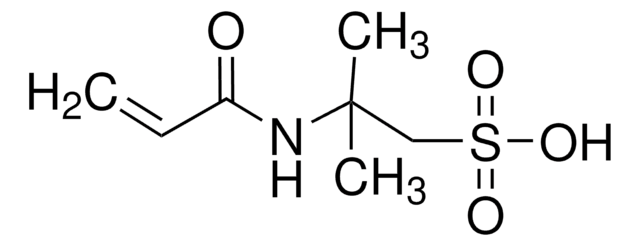

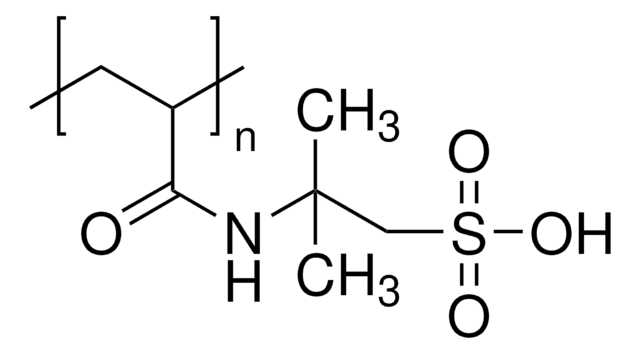
![[2-(Methacryloyloxy)ethyl]dimethyl-(3-sulfopropyl)ammonium hydroxide 95%](/deepweb/assets/sigmaaldrich/product/structures/217/219/73c91e1c-0ee4-4b3d-bead-a6dc3d09d1da/640/73c91e1c-0ee4-4b3d-bead-a6dc3d09d1da.png)
![[2-(Methacryloyloxy)ethyl]trimethylammonium chloride solution 75 wt. % in H2O](/deepweb/assets/sigmaaldrich/product/structures/316/612/66b0f4cf-d060-427d-b4f5-e8fab3e5cffe/640/66b0f4cf-d060-427d-b4f5-e8fab3e5cffe.png)

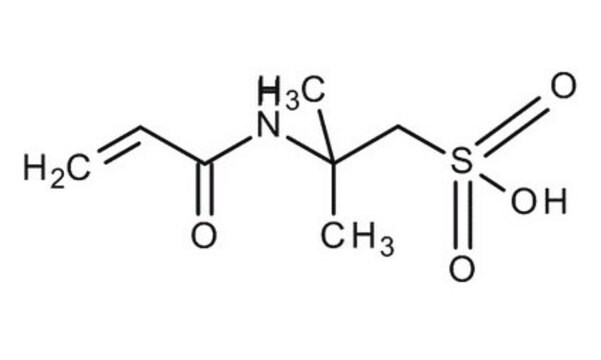
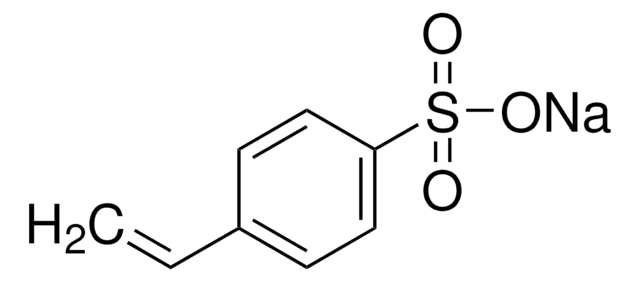

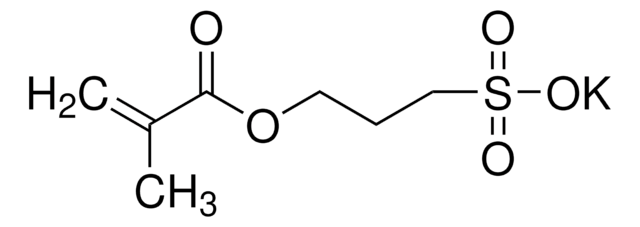
![[3-(Methacryloylamino)propyl]trimethylammonium chloride solution 50 wt. % in H2O](/deepweb/assets/sigmaaldrich/product/structures/189/736/089bc8ae-2a98-416d-9f9a-a0a510b6b828/640/089bc8ae-2a98-416d-9f9a-a0a510b6b828.png)
